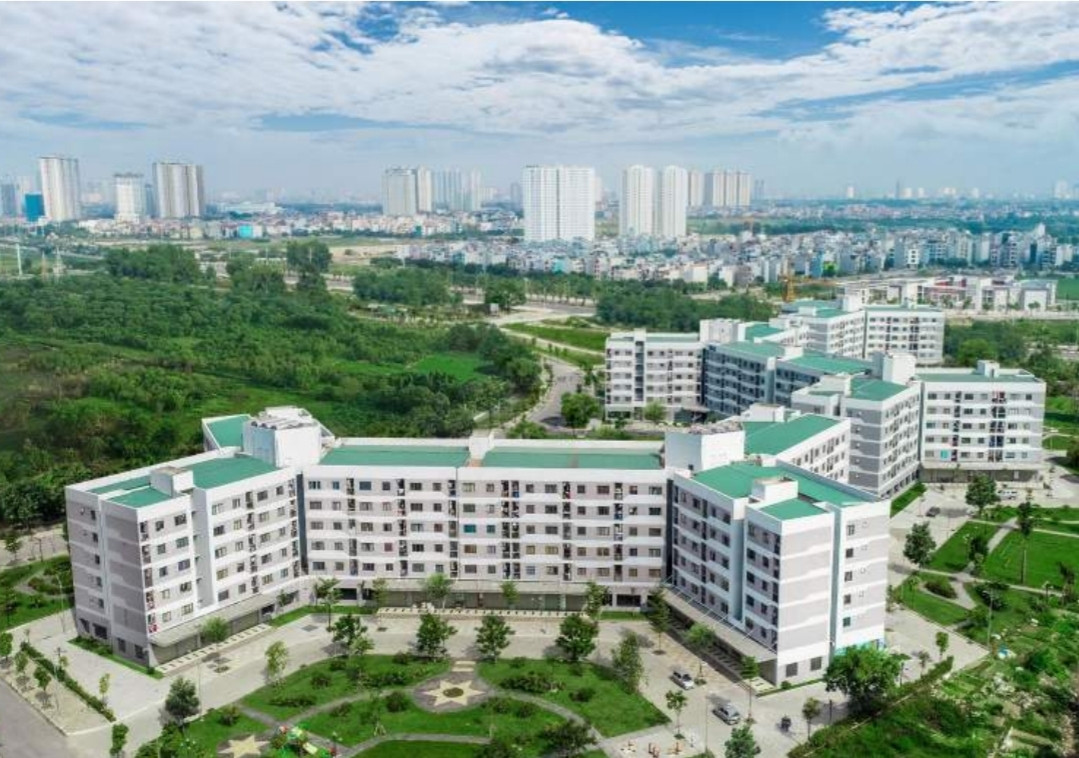Social housing is an important segment in the process of urban development and social security. However, in recent times, besides the small quantity that has not met the needs of the people, the quality of construction and design of social housing has not received due attention.
Concerned about construction quality and design
Due to the increasingly high real estate market prices, owning a private house or apartment in big cities like Hanoi is not a simple thing. Therefore, social housing is being chosen by many people with average and low incomes. However, the concept of "you get what you pay for" also makes many home buyers worried and hesitant.

In fact, in recent times, there have been a number of social housing projects with poor construction quality, leaks, rapid deterioration or lack of amenities and services. Many projects do not have convenient traffic connections, so they have been put up for sale dozens of times but still have no buyers, or some social housing projects have been complained by customers.
Chairman of the Hanoi Architects Association, Architect Nguyen Van Hai said that social housing was officially legalized in 2005 in the Housing Law 2005 and has been implemented in many large cities and industrial zones. However, up to now, this housing segment is still very modest compared to the needs of the people.
In particular, in the early stages of development, due to financial constraints, the quality of apartments in many social housing areas has seriously deteriorated after several years of use. This is due to the fact that during the implementation of projects, there was almost no investment or adequate research into architectural forms, ensuring minimum amenities for living spaces.
“Looking back at social housing projects in the past, from overall policies to planning and architectural issues, there are still many shortcomings. We are still struggling with how to make the lives of people better in the small area of apartments” – Architect Nguyen Van Hai acknowledged.
Regarding this issue, Director of the Hanoi Department of Planning and Architecture Nguyen Trong Ky Anh admitted that how architects can design social housing that is not different from commercial housing is a very difficult problem. Planners alone cannot solve it, but need synchronous mechanisms and policies. In addition, professional agencies also need to make recommendations and solutions to state management agencies on this issue.
Need close cooperation between 3 houses
From the perspective of a unit specializing in social housing design consulting, Chairman of Lap Phuong Architecture Joint Stock Company - CUBIC Architects, Architect Tran Vu Lam said that social housing is a type of project with many challenges such as: low cost; small apartment area controlled by regulations; minimizing unnecessary investment costs... However, when appraising, it is still necessary to strictly comply with financial regulations, design standards and regulations.
Therefore, for a social housing project to be successful and reach its destination, ensure quality, and be accepted by users, it requires the project to be invested in by experienced investors and accompanied by experienced design consultants and architects.
According to Architect Tran Vu Lam, in the process of researching and constructing social housing, it is necessary to pay close attention to the trade-off between cost reduction and sustainable development. Therefore, investors need to find experienced designers to optimize reasonable costs. All saved costs need to be balanced with the quality of architectural design of the project with standard spaces, good finishing materials, convenient landscapes, etc. to overcome the shortcomings of poor quality social housing in the past.
From a professional perspective, General Director of CUBIC Architects, Architect Nguyen Trung Dung stated that to bridge the gap between commercial housing and social housing, social housing design needs to ensure three factors: relative independence (apartments ensure privacy); community interaction (residential areas need to ensure community activities and interactions) and place (creating a familiar space, a peaceful image of a place to return to).
In particular, it is necessary to avoid “wearing uniforms” for social housing, only designing houses into concrete blocks. There should be optimal solutions for social housing blocks by focusing on landscape, public space, optimizing living space in apartments, ensuring the quality of architectural images of the building, and applying new technology in design.
According to Economics & Urban